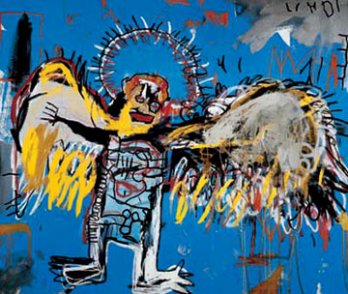1) Please summarize in a couple of sentences how Gutenberg influenced not only the renaissance, but the modernization of the western world.
Gutenberg influence the renaissance and the modernization of the western world through the invention of the printing press. By using movable type press with infinite template and type possibilities he was able to create a cheap alternative to hand making books and therefore made information much more accessible and reliable. This lead to more people having access to literature and other information as well as the ability for scholars and librarys to keep reliable records of such information and literary works.
2) Please discuss how you think these advancements continue to influence contemporary art making.
The advancements of Gutenbergs press continue to influence contemporary art making because of what they have left in the past. Without his advancements we would not have the scientific knowledge or advancements we have today. We now have books on art and literature, magazines and other resources which are useful as a contemporary art maker for doing research, coming up with ideas and inspiration for what to create, and making art more accessible.
3) Thinking about these issues, how does photocopier art relate to the history of the letterpress? How is it similar? How is it different? photocopier art relates because it makes mass production of print more accessible and easier for a greater body of individuals and allows them to create and share that much easier. It is similar in that it makes what would be a great task much easier and faster so that more copies can be produced. It is different in the way it is used where the letterpress is used to create books and newsprint photocopier artists create zines and aesthetically pleasing imagery as well as individual and original art work and copy art pieces.
4) Briefly do a search for contemporary print work and, after you have found two or three images you like, post them to your blog.
Avarice by Artemio Rodríguez, woodcut
"Dating Strippers"
by Martin Mazorra
4' x 8' Woodcut
on Heavyweight Canvas Banner
"The Multiplier"
by John Hitchcock
24" x 18" Woodcut
on Heavyweight White Paper
5) Please look up a few of the words you are not sure about the meaning of. Make a list of the words and their definitions on your blog. Please use dictionaries and encyclopedias or other valid sources (they can be online, but not wikipedia or any other such public website) for this exercise.
ostensible |äˈstensəbəl; əˈsten-|
adjective [ attrib. ]
stated or appearing to be true, but not necessarily so : the delay may have a deeper cause than the ostensible reason.
praxis |ˈpraksəs|
noun formal
practice, as distinguished from theory : the divorce between theory and praxis of Marxism which ensued under Stalinism.
• accepted practice or custom : patterns of Christian praxis in church and society.
ORIGIN late 16th cent.: via medieval Latin from Greek, literally ‘doing,’ from prattein ‘do.’
paradox |ˈparəˌdäks|
noun
a statement or proposition that, despite sound (or apparently sound) reasoning from acceptable premises, leads to a conclusion that seems senseless, logically unacceptable, or self-contradictory : a potentially serious conflict between quantum mechanics and the general theory of relativity known as the information paradox. See note at riddle .
• a seemingly absurd or self-contradictory statement or proposition that when investigated or explained may prove to be well founded or true : in a paradox, he has discovered that stepping back from his job has increased the rewards he gleans from it.
• a situation, person, or thing that combines contradictory features or qualities : an Arizona canyon where the mingling of deciduous trees with desertic elements of flora forms a fascinating ecological paradox.
ORIGIN mid 16th cent. (originally denoting a statement contrary to accepted opinion): via late Latin from Greek paradoxon ‘contrary (opinion),’ neuter adjective used as a noun, from para- ‘distinct from’ + doxa ‘opinion.’







